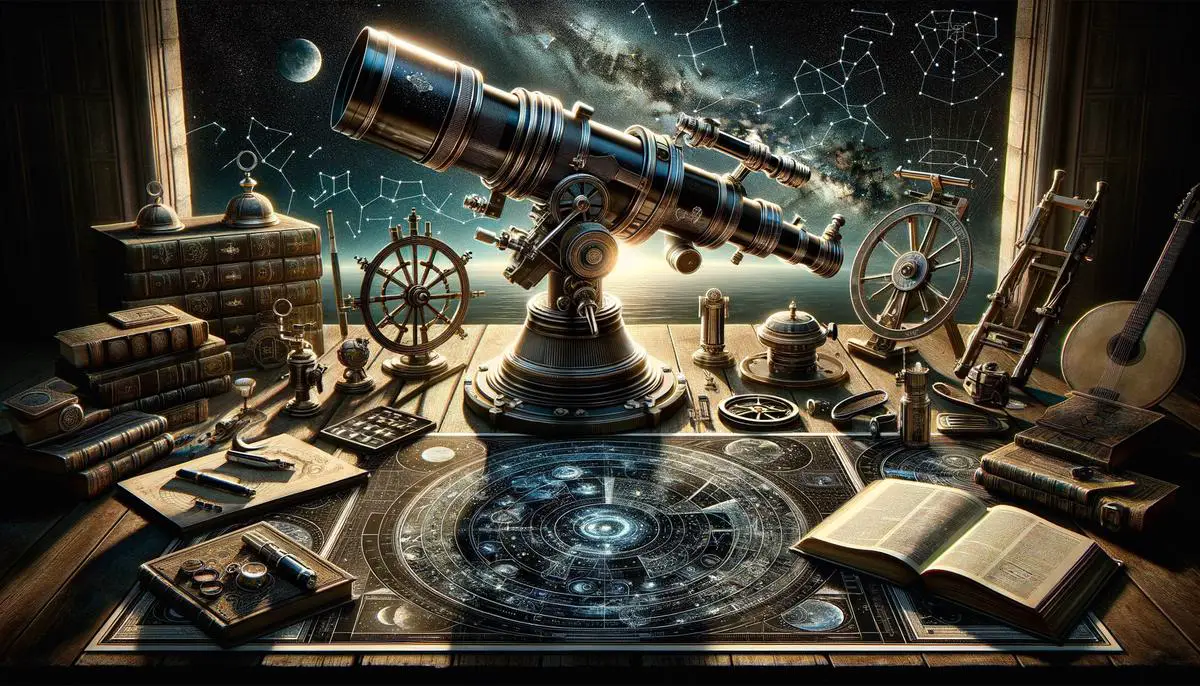Exploring the universe with high-end telescopes brings a new level of excitement and knowledge to astronomy enthusiasts. This article aims to unravel the intricate details of what makes a telescope not just good, but great for unlocking the secrets of the cosmos. As we examine the essentials from aperture size to the often overlooked aspects of maintenance, each factor plays a pivotal role in enhancing our connection to the stars above. It’s about transforming the way we look at the night sky, armed with the right tools for an extraordinary observational experience.
Key Specifications to Consider
High-End Telescopes: Unlocking the Universe with Key Specifications
When venturing into the realm of high-end telescopes, knowing the crucial specifications can be your ticket to the stars. These advanced pieces of technology offer a gateway to the wonders of the universe, from distant galaxies to the intricate details of planetary surfaces. Here are the essential factors you should consider.
Aperture Size: The Eye of the Telescope
At the core of any high-end telescope is its aperture size – essentially, how wide the telescope’s eye is. Measured in inches or millimeters, the aperture size determines how much light the telescope can capture from celestial objects. A larger aperture allows for brighter, clearer images with higher resolution. For enthusiasts aiming for deep-sky observations, telescopes with apertures starting at eight inches (200mm) are ideal, capturing faint nebulas and distant galaxies with ease.
Mount Type: Stability Meets Precision
The mount is the backbone of telescope stability and precision. For high-end telescopes, there are two types to consider: Equatorial and Alt-Azimuth mounts. Equatorial mounts are aligned with Earth’s axis, perfect for tracking stars and planets across the sky with minimal adjustments. Alt-Azimuth mounts are user-friendly, moving up, down, left, and right, ideal for quick, broad sweeps of the sky. Advanced observers often lean towards motorized equatorial mounts for their smooth tracking capabilities and long-exposure astrophotography support.
Optical Design: The Path of Light
The optical design determines how a telescope bends or refracts light to create images. The two main types are refractors and reflectors. Refractors use lenses, offering crisp, high-contrast images, making them superb for planetary and lunar observation. Reflectors, employing mirrors, excel in gathering light from distant, faint objects, offering broad views of the night sky. A third type, the compound or catadioptric telescope, combines lenses and mirrors, providing versatility with both bright planetary and deep-sky viewing capabilities.
Focal Length and Ratio: Zooming In
Focal length, the distance between the telescope’s lens or mirror and the point where the image is formed, influences how “zoomed in” your view will be. A longer focal length offers higher magnification, but at the cost of a narrower field of view. The focal ratio (focal length divided by aperture size) affects image brightness and the field of view. A lower focal ratio (“faster” telescope) provides wider, brighter views, preferable for deep-sky observing, while a higher focal ratio (“slower” telescope) is better suited for detailed observations of planets and the moon.
Eyepieces and Accessories: Fine-tuning Your View
Eyepieces are pivotal in determining magnification and observer comfort. High-end telescopes often come with one or two eyepieces, but investing in additional eyepieces can significantly enhance your viewing experience. Look for a range of focal lengths to vary magnification. Additionally, consider accessories like filters to enhance planetary details and nebulae visibility, or a Barlow lens to double or triple the magnification of your eyepieces.
In the quest to explore the cosmos, a high-end telescope equipped with the right specifications becomes an essential tool. Understanding these key features – aperture size, mount type, optical design, focal length and ratio, along with the right accessories – will empower your journey across the stars, making each observation an unforgettable adventure into the depths of space.
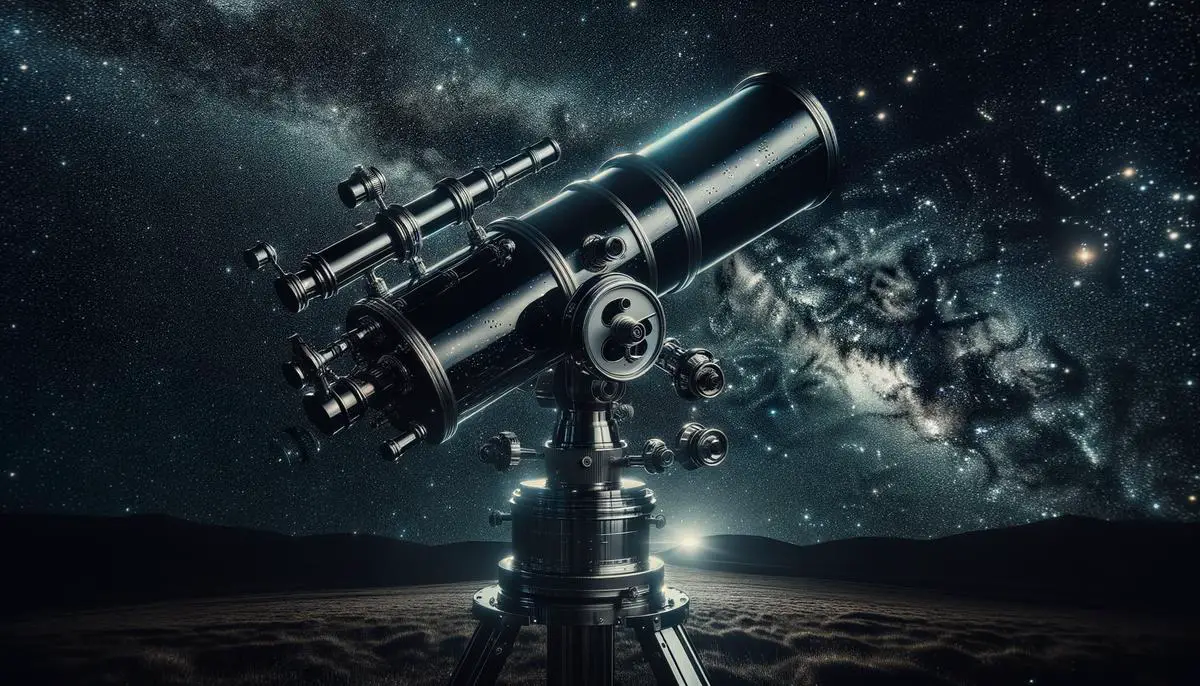
Top-Rated Telescopes Review
Brand Picks: Navigating the Stars with Today’s Top Telescopes
In the realm of astronomic exploration, selecting the right telescope can be pivotal. From seasoned astronomers to the curious backyard stargazer, the quest for the best viewing experience leads to a market filled with options. Here, we illuminate the top contenders that have garnered attention for their superior performance, innovation, and reliability.
Celestron – NexStar 8SE Telescope
Renowned for its balance between affordability and functionality, the Celestron NexStar 8SE stands out with its 8-inch aperture that brings distant galaxies within reach. This Schmidt-Cassegrain type telescope combines portability with power, offering a database of over 40,000 celestial objects with automated tracking thanks to its computerized altazimuth mount. Particularly suitable for beginners and intermediate users, the 8SE makes locating and tracking celestial bodies a breeze.
Sky-Watcher EvoStar 120 APO Doublet Refractor
Sky-Watcher’s EvoStar 120 has become a favorite among astrophotographers for its exceptional clarity and contrast. The APO (Apochromatic) refractor minimizes chromatic aberration, rendering sharper, more accurate images. With a 120mm aperture and a sturdy equatorial mount, this model is optimal for those who prioritize detail and color fidelity in their celestial observations. Its versatility appeals to both visual observers and photography enthusiasts alike.
Orion Atlas 10 EQ-G GoTo Reflector Telescope
For the advanced user, the Orion Atlas 10 EQ-G GoTo offers a powerhouse of features. This reflector telescope boasts a substantial 10-inch aperture paired with a computerized equatorial mount, enabling precise tracking of objects as they move across the sky. The inclusion of a GoTo database with over 42,000 celestial objects simplifies the discovery process. Its robust build and precise control systems make it ideal for deep-sky photography and detailed lunar and planetary observation.
Meade Instruments – LX90 ACF Telescope
Rounding off the selection is the Meade LX90 ACF. Incorporating Meade’s Advanced Coma-Free (ACF) optics, this model promises stunningly sharp and high-contrast views, rivaling those of a professional observatory. With an 8-inch aperture and a GPS-enabled computerized altazimuth mount, it excels in both ease of use and performance. Astronomy enthusiasts will appreciate the LX90 ACF for its top-tier optics and user-friendly features that cater to both viewing and astrophotography.
In the search for the universe’s wonders, the choice of a telescope can significantly impact your journey through the stars. The aforementioned models epitomize the best in current telescope technology, offering options for every enthusiast, from the amateur astronomer to the astrophotography expert. Each telescope presents a unique doorway to the cosmos, promising countless nights of discovery and awe as you navigate the celestial sphere. Whether you’re peering into the depths of space or capturing its beauty, these telescopes stand ready to enhance your exploration of the final frontier.
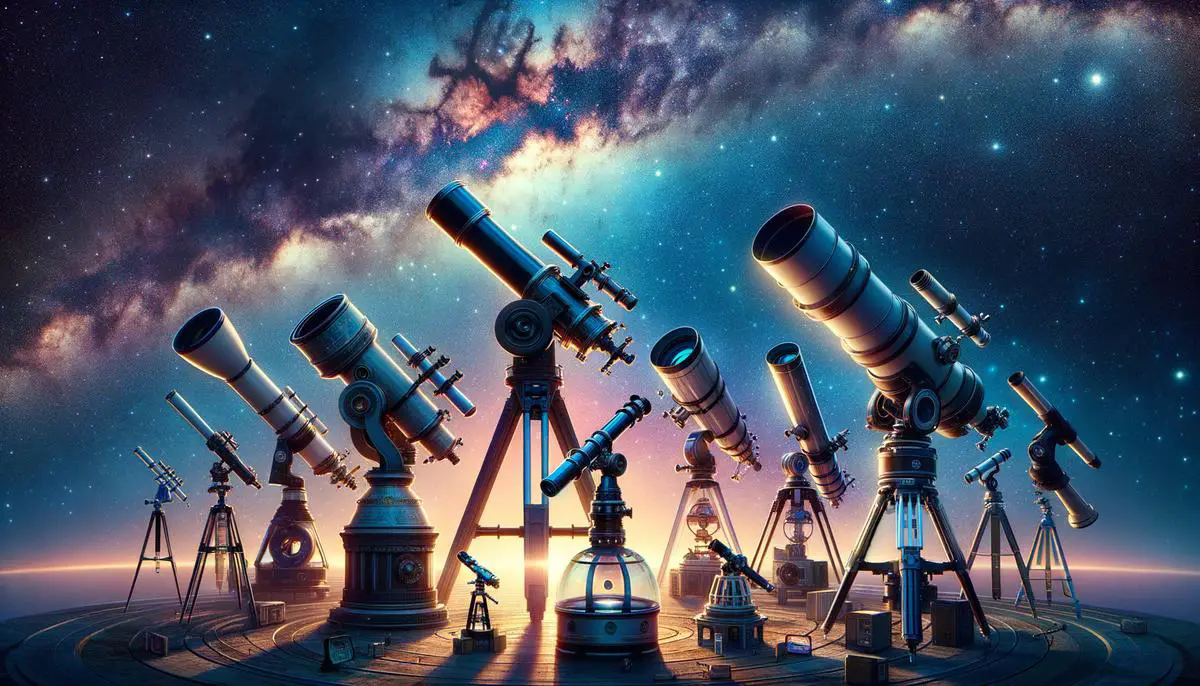
Advanced Features and Accessories
In the realm of astronomical observation, the journey into the stars is only as enlightening as the tools employed. Beyond the foundational aspects like aperture size and optical design, several advanced features serve as the gateway to unraveling the mysteries of the cosmos with unprecedented clarity and depth.
Adaptive Optics: A Revolution in Clarity
One such revolutionary feature is adaptive optics. This technology compensates for the Earth’s atmospheric turbulence, which often distorts the images of celestial objects. By dynamically adjusting the shape of a telescope’s optics in real time, adaptive optics delivers images with razor-sharp precision, enabling astronomers to observe the surface of distant planets and stars with startling clarity.
- Computerized Control Systems: Navigating the Cosmos with Ease
The era of digital technology brings forth computerized control systems, transforming how we explore the night sky. These systems, equipped with vast databases of celestial objects, allow users to pinpoint the exact location of stars, galaxies, and nebulas within seconds. With just a few clicks, even amateur astronomers can navigate the cosmos as efficiently as seasoned veterans, making the awe-inspiring beauty of outer space accessible to all.
- Light Pollution Reduction: A Gateway to the Stars
As urban sprawl continues, the curse of light pollution veils the night sky, obscuring our view of the cosmic wonders. Thanks to the incorporation of light pollution reduction filters and advanced software, modern telescopes offer a solution. These innovations significantly enhance the visibility of celestial objects in even the most light-polluted environments, ensuring that the majesty of the Milky Way and beyond remains within sight, no matter where one observes from.
High-Resolution Imaging: Capturing the Universe in DetailWith the advent of high-resolution imaging capabilities, the universe unfolds in unprecedented detail. This feature allows for the capture of images with such clarity that even the faintest galaxies billions of light-years away become visible. Whether it’s documenting the intricate spiral arms of a distant galaxy or the vibrant bands of Jupiter, high-resolution imaging empowers astronomers to document the cosmos with a level of detail that was once the sole domain of large observatories.
Spectroscopy: Unveiling the Chemical DNA of the CosmosSpectroscopy, the analysis of the light spectrum emanating from celestial bodies, offers a window into the composition, temperature, density, and velocity of stars and galaxies. This feature enables astronomers to decipher the “chemical DNA” of the cosmos, providing insights into the life cycle of stars, the formation of galaxies, and the enigmatic nature of dark matter. Spectroscopy transforms the act of observation into a profound scientific inquiry, allowing us to understand not just where objects are in space, but what they are made of and how they came to be.
In weaving together these advanced features, the field of astronomical observation is not just about looking; it’s about discovering. From adaptive optics to spectroscopy, each technology opens a new chapter in the human quest to understand the universe. As we stand on the shoulders of these technological giants, the stars are no longer distant points of light; they are destinations waiting to be explored, holding the secrets of our cosmic origins within their grasp.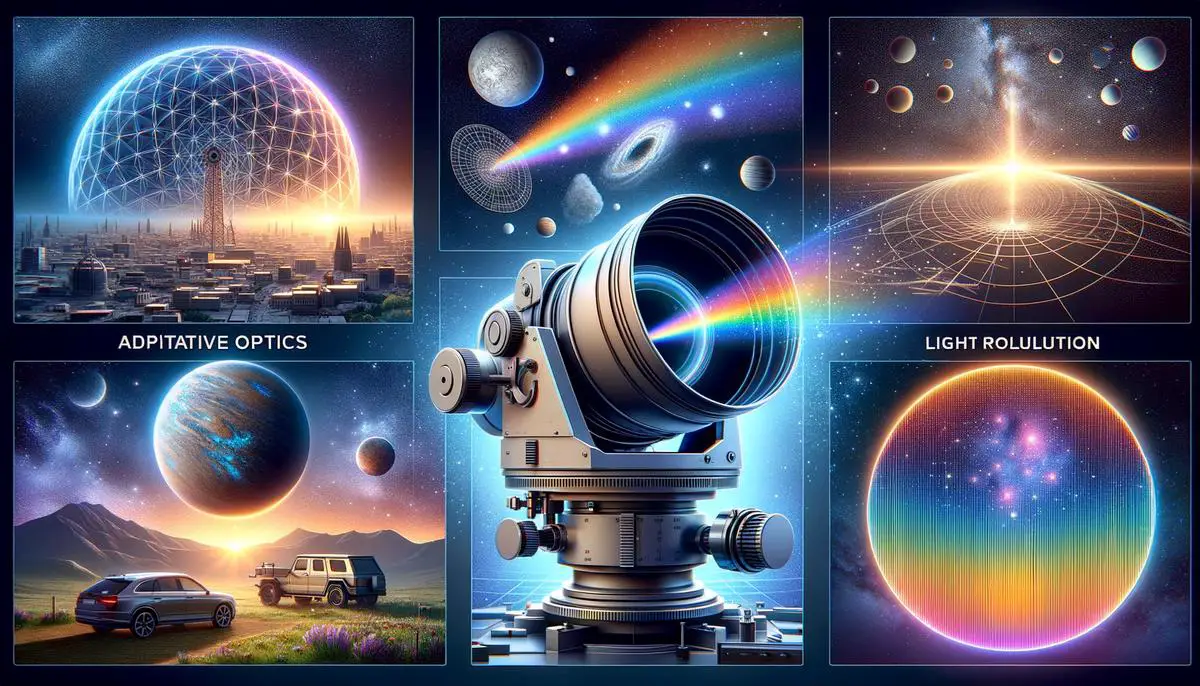
Setting Up and Maintenance Tips
Ensuring the best astronomical observations necessitates more than just a top-tier telescope; it involves an amalgamation of calibration, location selection, and ongoing maintenance. Let’s delve into these critical aspects to guarantee that astronomers, whether amateur or professional, can harness the full potential of their equipment.
Calibration for Precision:
To start off, precise calibration is non-negotiable. This process involves aligning the telescope’s optics and ensuring that its tracking system is accurately synchronized with the stars. It’s a meticulous task that might seem daunting but pays off by drastically enhancing the quality of observations. Regular calibration is crucial, especially after transporting the telescope or after a significant period of inactivity.
Choosing the Perfect Observation Spot:
Next, the choice of location significantly impacts the quality of astronomical observations. Astronomers should seek out spots with minimal light pollution, far from city lights, to unveil the faintest celestial objects. Additionally, high-altitude locations are preferable as they reduce atmospheric interference, providing clearer and more stable images of the cosmos.
Maintenance Is Key:
Like any sophisticated instrument, telescopes demand regular maintenance to perform at their best. This involves cleaning the optical surfaces with appropriate, non-abrasive materials to avoid scratching or damaging them. Dust and grime can significantly degrade image quality, meaning that keeping optics pristine is not just about aesthetics but about preserving the integrity of observations.
Environmental Considerations:
Telescopes, being sensitive devices, are affected by their environment. Humidity and temperature changes can lead to condensation on optical surfaces or even the growth of fungus over time. To mitigate these risks, storing the telescope in a cool, dry place and using protective covers when not in use is advisable. Some astronomers go as far as including silica gel packs with their stored equipment to absorb excess moisture.
Upgrades and Adaptations:
Finally, staying abreast of technological advancements and considering upgrades can significantly boost a telescope’s performance. This might include adding more sophisticated eyepieces, upgrading to a more powerful mount, or incorporating advanced tracking systems. Embracing these improvements can extend the life of the telescope and expand the range of observable celestial phenomena.
By concentrating on these areas—calibration for precision, location selection, meticulous maintenance, environmental adjustments, and considered upgrades—astronomers can significantly enhance their observational experience. Whether it’s capturing the dim light of a distant galaxy, tracking a comet’s journey through the solar system, or simply gazing at the lunar surface’s intricate details, the right setup and maintenance regime makes all the difference. Remember, in the realm of astronomy, preparation and care are just as important as the equipment itself.
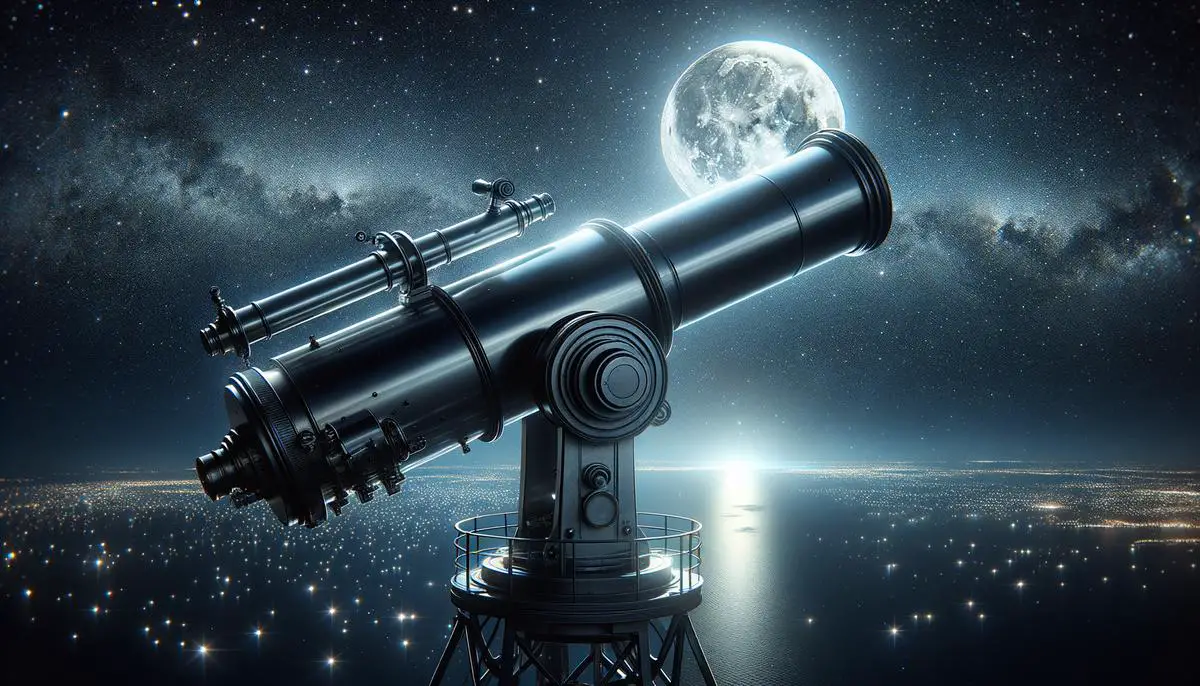
Investing in High-End Telescopes: Worth It?
For experienced astronomers, the decision to invest in a high-end telescope goes far beyond mere hobbyist enthusiasm – it’s a commitment to advancing their exploration of the cosmos. With the foundational groundwork of telescope essentials such as aperture size and mount type already well understood, the justification for such an investment hinges on the specialized capabilities these advanced instruments offer.
High-end telescopes are not just about what you can see, but how you see it. Adaptive optics, for instance, transforms the viewing experience by correcting atmospheric distortions in real-time. This technology, once exclusive to professional observatories, allows backyard astronomers to achieve sharp, detailed images that were previously unattainable.
The leap to sophisticated computerized control systems is another game-changer. With the ability to accurately locate and track celestial objects with minimal effort, these systems empower astronomers to navigate the night sky with unprecedented ease. Whether it’s tracking a fast-moving comet or conducting detailed astrophotographic sessions, the precision and convenience offered by these systems justify their premium.
Light pollution, a growing challenge for astronomers, can significantly diminish the quality of observations. High-end telescopes often incorporate advanced light pollution reduction filters or techniques, enabling users to pierce through the veil of artificial brightness and unlock the wonders of the night sky even from urban settings.
When it comes to capturing the universe, high-resolution imaging capabilities of these telescopes stand out. Equipped to support high-end cameras and accessories, they enable detailed astrophotography, revealing intricate celestial phenomena that elude lesser instruments. This not only enriches the observational experience but also contributes valuable data to the field of astronomy.
Spectroscopy, the analysis of the spectrum of light emitted by objects, opens up a new dimension of astronomical discovery. By enabling the identification of chemical compositions, temperatures, and velocities, high-end telescopes with spectroscopic capabilities provide a deeper understanding of the cosmos. This feature is particularly compelling for experienced astronomers looking to contribute original research or deepen their astrophysical knowledge.
The journey of choosing and using a high-end telescope, however, does not end with the purchase. Calibration ensures the precision of observations, while the selection of an optimal observation spot can dramatically influence the quality of astronomical pursuits. Maintenance plays a crucial role in preserving the telescope’s performance and longevity. Furthermore, environmental factors like humidity and temperature can affect observations, making it imperative to consider these aspects in planning sessions. Lastly, the capability to upgrade and adapt the telescope with new technologies or accessories ensures that it remains a valuable tool for exploration and discovery.
In sum, the investment in a high-end telescope for an experienced astronomer is far from a mere luxury. It is a vital step towards unlocking the full potential of their astronomical endeavors. With features that enhance clarity, ease of use, and depth of analysis, these telescopes are indispensable tools for those serious about their star-gazing pursuits. For the experienced astronomer, the question isn’t whether a high-end telescope is justified, but rather how far they wish to go in their celestial explorations.
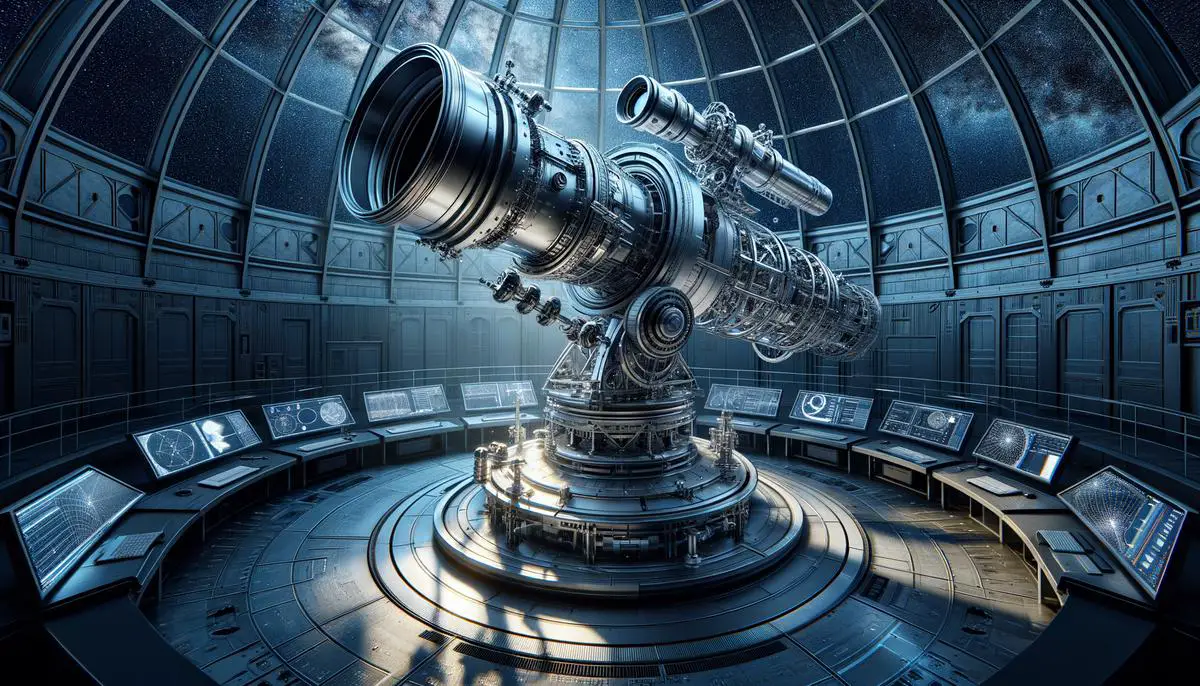
Investing in a high-end telescope transcends the mere act of observation; it’s a commitment to deepening our understanding of the universe. Each specification and advanced feature discussed reveals its unique contribution towards achieving clearer, more precise, and profoundly impactful celestial views. For the experienced astronomer, such an investment not only enriches their personal exploration but also contributes to the broader field of astronomy. As these telescopes unlock the cosmos with unparalleled clarity and ease, they reaffirm our enduring fascination with the stars and our relentless pursuit of knowledge beyond our earthbound confines.
![]()
